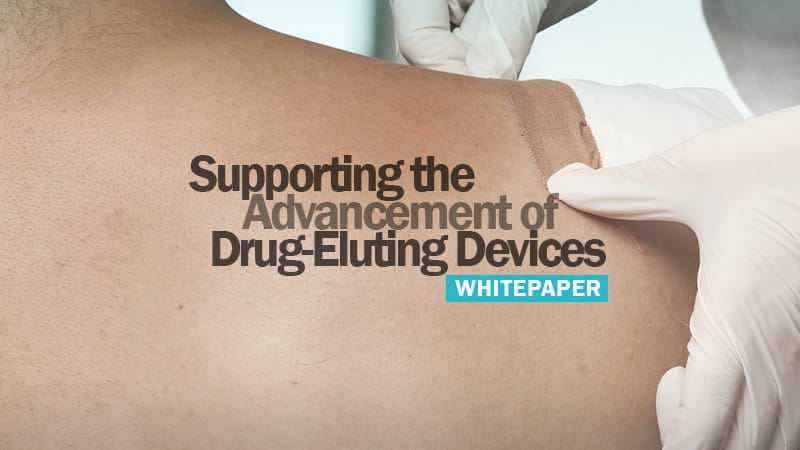Supporting the Advancement of Drug-eluting Devices | Trelleborg

Trelleborg Sealing Solutions releases two whitepapers focused on the combination of silicone with Active Pharmaceutical Ingredients (API) that will support healthcare & medical device engineers and designers involved in the development of drug-eluting devices.
Drew Gaillard, Global Director Healthcare & Medical for Trelleborg Sealing Solutions, says: “The Healthcare market is driven by trends such as an aging population, increasing chronic disease, and global healthcare concerns related to obesity, diabetes and infectious diseases. With these trends comes other struggles for the medical community, such as an increase in catheter associated infections or the challenge of ensuring patient compliance with their medications. These trends and challenges have in turn led to the rapid innovation in drug device combination products, in particular those that elute regular, controlled doses of drugs precisely and consistently to a treatment area.”
Drug-eluting devices can be produced in and by a variety of materials and processes. One of the most successful materials in the design and production of combination products, in particular implantable ones, is silicone.
Gaillard continues: “Trelleborg Sealing Solutions is at the forefront of silicone drug-eluting product innovation and has studied the different methods of combining silicone with an API. The results of testing on the immersion method are now available to engineers and designers working in the healthcare & medical field.”
In the whitepaper Supporting the Advancement of Drug-Eluting Devices, two methods of adding Active Pharmaceutical Ingredients (API) to silicone, the addition of API to raw silicone and the impregnation of vulcanized silicone with API by immersion, are discussed.
The traditional method of adding API to uncured silicone is proven and effective. However, it is limited to API that are resistant to a vulcanization process and exposure to heat. A newer method of impregnation of vulcanized silicone by API, potentially broadens the APIs that can be used in drug-eluting silicone devices. This whitepaper presents test results that prove the effectiveness of this method, potentially opening drug-eluting devices to delivery of a wider range of API.
The second whitepaper, Fighting Hospital Acquired Infection, focuses on Healthcare-Associated Infections (HAI). Although combatting hospital-acquired infections has been a focus for the medical community, they still remain a significant issue. In particular, catheter-associated infections are difficult to prevent due to a catheter’s inherent positioning: part in and part out of the body.
Silicone is often used for the catheter tubes and though the material is biocompatible and biostable, it is not immune to bacterial colonization. Techniques exist that can reduce this colonization including coating, addition of antibiotic API to raw silicone and the impregnation of vulcanized silicone with API through immersion. In this whitepaper the three techniques are evaluated and Trelleborg shares its results from an effectiveness study of the impregnation methodology.
The two whitepapers, Supporting the Advancement of Drug-Eluting Devices and Fighting Hospital Acquired Infection, are the latest additions to the Trelleborg Sealing Solutions technical area that contains valuable resources for the engineer and designer. Registration and access to all resources is free.